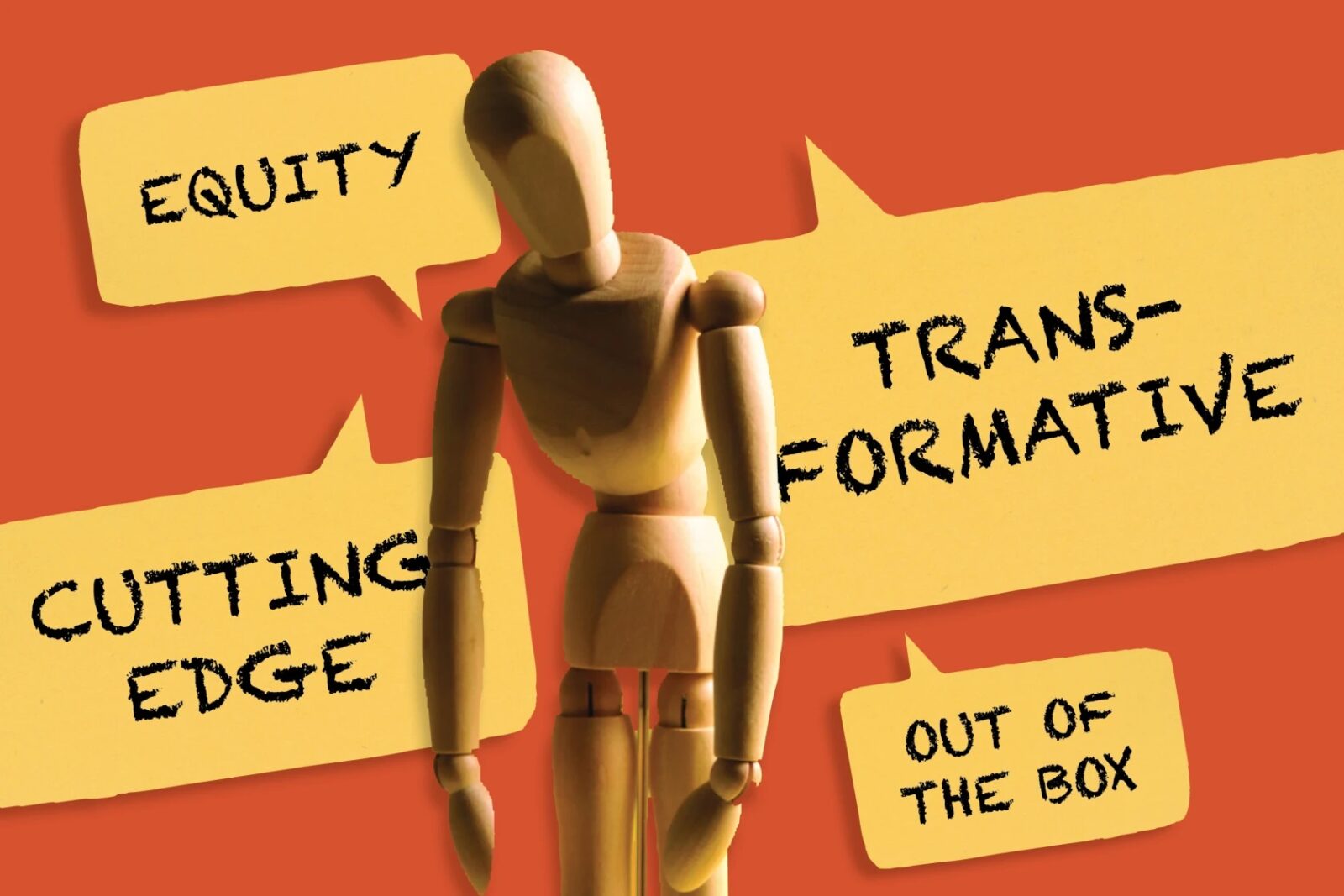Click here to read on The Chronicle of Philanthropy.
Like any other field, the nonprofit world is mired in jargon. If you work in the sector, there’s a good chance you’ve come across the following phrases, or even written them yourself, in the last few days: disrupt the status quo, move the needle, advance equity for all, shift the paradigm, launch a movement.
Such language reflects the field’s grandiose sense that the problems it’s tackling are nuanced, complex, deep-seated, and urgent. The problem is that jargon of this kind promises sweeping societal change while remaining vague about the specifics. It allows nonprofit leaders to feel like they’re making a bold statement when they actually aren’t saying much at all.
Fortunately, this is a solvable problem. Weeding out jargon and developing compelling stories requires stepping out of bubbles where social-sector lingo predominates. It means engaging thought partners — both digital and human.
Ask ChatGBT about equity. These days the word “equity” is included in nearly every nonprofit’s storytelling. But its ubiquity has engendered carelessness. Rather than a thoughtful choice, it’s become a check-the-box word. Ask a panel of nonprofit executive directors to introduce their organizational missions, and they might all glibly answer down the line: “Prison reform … and equity!” “Climate change … and equity!” “Youth literacy … and equity!”
But what do organizations mean when they say “equity”? Are they using the word in a way that allows audiences to understand how it connects to their work? A simple test is to ask ChatGPT to generate equity-focused language for a generic nonprofit engaged in work similar to your own organization. If ChatGPT spews out language that looks a lot like that of your nonprofit, there’s a good chance the story you’re telling is too vague and indistinct.
“Our mission is to advance environmental sustainability and social equity by addressing the unequal distribution of environmental burdens and benefits. We strive to create a just and resilient society where everyone has access to clean air, water, and natural resources, and where vulnerable communities are empowered to participate in decisions that affect their environment.”
This mission statement is remarkably like the real mission statements of many environmental nonprofits. Yet it is unclear what this theoretical organization does. To tell a clear story, the mission statement would need to specify:
- How it promotes equity — through legal advocacy, grassroots organizing, grants for sustainable development?
- How it empowers affected communities to participate in decision making — through educational programming, advisory boards, town halls?
- At what scale it operates — within a specific community or a larger region?
Use Google to test your organization’s narrative. Nonprofits operate in a competitive landscape that requires constant wooing of constituents, partners, and donors. That’s why it’s critical that an organization’s narrative stands out from the crowd. Deploying Google to cross-check the language used by a nonprofit to describe itself is a good way to start eliminating jargon and replacing it with more specific and helpful language.
For example, I Googled the names of 10 education nonprofits alongside each of the descriptors in the table below: transformational, cutting-edge, out-of-the-box, and paradigm shift. I checked off whether each organization uses any of these words to describe its work.
So, how does an organization distinguish itself from all these other transformative and paradigm-shifting groups with their cutting-edge programs and out-of-the-box approaches? Here are a few questions to consider:
- What exactly is being transformed and what will that transformation look like?
- What edge is the organization cutting? In other words, what are the traditional or systemic boundaries that the organization is breaking through?
- What’s currently in the box? What’s outside of it?
- What paradigm is the organization shifting? And how?
Ask humans what they think. When nonprofits use sector jargon in their narratives, they may alienate audiences who don’t share that language. Worse, they could misrepresent the people and communities at the center of their story. Because ChatGPT and Google draw language from what is most often used by the general population, they fail as tools to check whether storytelling is accessible to and resonant with diverse audiences.
The response was eye-opening. Rather than describing itself as a “transformative educational opportunity” — whatever that means — the alumni suggested that the word “steppingstone” more accurately characterized the program. They also objected to the use of terms such as “underserved adults,” “adults facing economic hardship,” or “adults in adverse circumstances” to describe program participants — and were wary of labels in general. They instead suggested emphasizing how the program motivated them to think differently about their own ability to create change, personally and politically.
We spent the rest of the time on Zoom drafting a new description that would appeal to prospective applicants. “It should be warm and inviting,” one woman said — and less grandiose and wordy, with easy-to-read short sentences and paragraphs. Rather than using the third person, they suggested that the description should refer to prospective applicants as “you,” so it was clear program leaders were talking to them, not about them.
In other words, the description should sound “more human” — and less like it was generated by AI.
Return to Insights & Events

